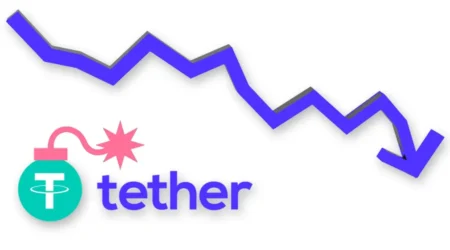How Consensus and Execution Work on Layer 2 Blockchains
Learn how Layer 2 networks like Optimistic Rollups and ZK-Rollups handle consensus, execution, and security to scale blockchain performance and reduce costs.

On Layer 2 (L2) blockchain networks, consensus and execution mechanisms are designed to scale the performance of the underlying Layer 1 (L1) chain, such as Ethereum, while maintaining security and decentralization. Here’s a breakdown of how these processes work on L2 networks.
Execution
Execution refers to the process of validating and processing transactions. On L2 networks, execution is handled off-chain or partially off-chain, which reduces the load on the L1 chain. The two most common approaches for L2 execution are Rollups (Optimistic Rollups and ZK-Rollups) and Sidechains.
Optimistic Rollups
- Execution: Transactions are executed off-chain on the rollup chain, and the result (the state root) is periodically posted to the L1.
- Fraud Proofs: Optimistic rollups assume transactions are valid but allow participants to submit “fraud proofs” to challenge the correctness of the transactions. If a fraud proof is submitted, the rollup’s state is recalculated on the L1 to ensure correctness.
- Example: Arbitrum, Optimism.
ZK-Rollups
- Execution: Transactions are also executed off-chain, but instead of relying on fraud proofs, ZK-rollups generate validity proofs (using zero-knowledge proofs) for every batch of transactions.
- Validity Proofs: These cryptographic proofs are posted on-chain, ensuring that the L1 does not need to re-execute transactions to verify correctness. This makes ZK-Rollups more efficient in terms of finality and security.
- Example: zkSync, StarkNet.
Sidechains
- Execution: Sidechains are independent blockchains with their own consensus and execution models, connected to the L1 via a bridge. They process transactions off the L1 and periodically synchronize with it.
- Security Trade-off: Sidechains don’t inherit the security guarantees of the L1 as rollups do but can offer faster transactions.
- Example: Polygon PoS chain.
Consensus
Consensus refers to the mechanism by which participants in the network agree on the state of the chain (which transactions are valid). In L2 networks, the consensus is often decoupled from the L1 consensus, meaning that the L2 network may have its own method for determining transaction order and validity. However, the final validation and settlement of state changes rely on the L1.
Optimistic Rollups
- Consensus: These rollups use an optimistic assumption that the L2 operator (or validators) behaves honestly. Transactions are batched and posted to the L1 along with their state roots. Consensus happens off-chain between validators, but the L1 chain can challenge this through fraud proofs, making it trustless.
- Execution results on L1: Even though the transactions themselves are processed off-chain, the L1 consensus ensures that the correct state is committed through challenge mechanisms.
ZK-Rollups
- Consensus: The consensus here is more cryptographic than social. Validators (or sequencers) batch transactions and generate a zero-knowledge proof. Once the proof is posted to L1, it serves as a cryptographic guarantee of correctness, so no further consensus is needed on L1.
- Execution results on L1: The state changes on L2 are final when the ZK-proof is verified on L1, leading to near-instant finality.
Sidechains
- Consensus: Sidechains typically use their own consensus algorithms, such as Proof of Stake (PoS) or Proof of Authority (PoA). These are independent of the L1 consensus and handle transaction validation and ordering on the sidechain itself.
- Execution results on L1: The state is bridged to the L1 for final settlement, but the consensus on the sidechain doesn’t necessarily rely on L1 unless it’s for finalizing cross-chain transfers.
Data Availability
Data availability is crucial for L2 networks, especially for rollups. After transactions are processed off-chain, data about these transactions needs to be available for verification on L1. If users or validators cannot access this data, they cannot challenge incorrect transactions.
Optimistic Rollups
- Transaction data is posted to the L1, ensuring that users can verify the state and submit fraud proofs if needed.
ZK-Rollups
- The validity proof (a cryptographic proof) and state changes are posted on L1. Data availability is managed off-chain but can be challenged by cryptographic proof.
Sidechains
- Data availability is managed by the sidechain itself, meaning it doesn’t post all transaction data to L1. This can lead to security risks if the sidechain is compromised.
Security & Finality
The L2 inherits security from L1, but finality depends on how quickly state transitions can be confirmed by the L1:
- Optimistic Rollups: Finality depends on the challenge window for fraud proofs, which can be several days. However, once the challenge period passes, the state is considered final.
- ZK-Rollups: Finality is achieved as soon as the validity proof is posted and verified on the L1, usually within a few minutes.
- Sidechains: Finality is dependent on the consensus mechanism of the sidechain, and state changes are bridged to L1 periodically.
In summary, L2 networks offload the bulk of execution and consensus to enhance scalability and reduce fees, but they rely on L1 for final settlement and security guarantees, particularly in the case of rollups. Optimistic rollups rely on fraud proofs to enforce correct execution, while ZK-Rollups use cryptographic validity proofs for instant correctness. Sidechains function more independently but come with different security trade-offs.







